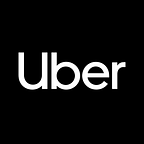Analysis on Impacts of Driver Reclassification
By Alison Stein, Economist at Uber
On May 22nd, California’s state unemployment rate rose to a record 15.5%. Over 2.9 million Californians are out of work, more than during the height of the 2008–2009 recession. However, despite the current economic crisis, the State government is currently pursuing actions that we estimate threaten 158,000 additional work opportunities each quarter for Californians who earn using Uber.
We have undertaken an internal assessment of what changes Uber’s California ridesharing business would need to make if it were forced to convert drivers to employees. We estimate that rider prices would need to increase 25–111% across different parts of California to cover increased costs. Larger cities would be able to support lower prices when compared to less urban areas, where sparse demand makes it more costly to sustain a business under an employment model.
These higher prices would of course reduce demand for trips, thereby shrinking the amount of available work for drivers, and constraining where Uber is able to provide a reliable service. We estimate reduced demand leading to 23–59% trip loss across our California markets, with the greatest impacts in sparse areas.
Lastly, we estimate how many employee drivers would be needed to service this new, lower level of demand. Shifting to an employment model would put pressure on Uber to consolidate working hours across fewer workers in order to manage costs that are fixed per employee. Under an employment model, it is likely that the new norm for Uber drivers would conform with the 40-hour work week which is the standard for full time U.S. employees. The overwhelming majority of drivers in California today spend far less than that amount of time on our app. It is an unfortunate consequence of reclassification that the majority of these workers would be displaced. Statewide, we estimate that the number of drivers active each quarter would fall from 209,000 to 51,000 [1]. This represents a 76% decrease in the number of drivers finding work on the Uber platform. This final map shows how these losses are concentrated in less urban markets.
_________________________
[1] As drivers today use the app very sporadically, the decrease in work opportunities is even greater if we extend the time window that we are considering.
